
Reliant Motor Company was a British car manufacturer based in Tamworth, Staffordshire, England. It was founded in 1935 and ended car production in 2002, the company had been known as "Reliant Motor Company" until the 1990s when it became "Reliant Motors" and then finally became "Reliant Cars LTD" after production had ended of the Robin as the company was restructured to be a car import business. It is now a dormant company and the only entity left is a separate parts company created called "Reliant Partsworld" which produces parts for Reliant vehicles.
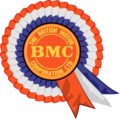
The British Motor Corporation Limited (BMC) was a UK-based vehicle manufacturer formed in early 1952 to give effect to an agreed merger of the Morris and Austin businesses.

Delta Motor Corporation was a South African car manufacturer, which was created through a management buy-out after General Motors (GM) divested from South Africa in 1986. It was headed by former GM executive, Bob Price, who had returned to South Africa from Detroit. He had previously served as General Motors South Africa's managing director between 1971 and 1974, and later became president of Motors Trading Corp., a subsidiary that engages in international trade on behalf of GM.

Anadol was Turkey's first domestic mass-production passenger vehicle company. Its first model, Anadol A1 (1966–1975) was the second Turkish car after the ill-fated Devrim sedan of 1961. Anadol cars and pick-ups were manufactured by Otosan Otomobil Sanayii in Istanbul between 1966 and 1991.

Ogle Design is a British design consultancy company founded in 1954 by David Ogle and based in Letchworth, Hertfordshire.

The Reliant Robin is a small three-wheeled car produced by the Reliant Motor Company in Tamworth, England. It was offered in several versions over a period of 30 years. It is the second-most popular fibreglass car in history after the Chevrolet Corvette, with Reliant being the second-biggest British car manufacturer for a time.

A knock-down kit is a collection of parts required to assemble a product. The parts are typically manufactured in one country or region, and then exported to another country or region for final assembly. CBU, on the other hand, stands for "Completely Built Up" and signifies import of a finished product.
The Button car plan, also known as the Button plan, was the informal name given to the Motor Industry Development Plan, a Hawke government initiative intended to rationalise the Australian motor vehicle industry and transition it to lower levels of protection. It took its name from Senator John Button, the then federal Minister for Commerce, Trade and Industry.

The Trekka was a light utility vehicle built on the basis of the Czech Škoda Octavia, manufactured in New Zealand between 1966 and 1972. It is the only vehicle designed and manufactured in New Zealand to have entered commercial production for an extended period.
Road tax, known by various names around the world, is a tax which has to be paid on, or included with, a motorised vehicle to use it on a public road.

Devrim was the first-ever automobile designed and produced in Turkey.
Toyota New Zealand Limited is the importer and distributor of new Toyota and Lexus vehicles to New Zealand. It also imports used vehicles from Japan and refurbishes them at its former assembly plant in Thames.
Ford Otomotiv Sanayi A.Ş., doing business as Ford Otosan, is an automotive manufacturing company based in Turkey that is equally owned by Ford Motor Company and Koç Holding. The company was established in its current form in 1977, with original relations dating back to 1928. It currently operates in six locations: Gölcük and Yeniköy plants in Kocaeli, İnönü plant in Eskişehir, Craiova plant in Romania, Sancaktepe R&D Center and spare parts warehouse in Istanbul The company employs more than 20,000 people and had a production capacity of over 700,000 vehicles, 400,000 engines, and 140,000 powertrains by 2022.
The Todd Corporation is a large private New Zealand company with a value of $4.3 billion, owned and controlled by the Todd family and headquartered in Wellington, New Zealand. The corporation is currently led by board chair, Nick Olson, and group chief executive officer, Evan Davies. The corporation employs 800 individuals at 10 locations in New Zealand, Australia, and Canada including seven on the executive team. The board of directors has seven members.
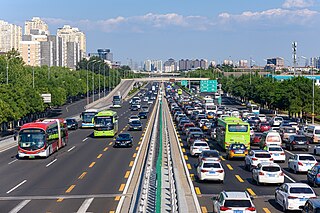
The automotive industry inmainland China has been the largest in the world measured by automobile unit production since 2008. As of 2024, mainland China is also the world's largest automobile market both in terms of sales and ownership.
United Australian Automobile Industries (UAAI) was an automobile model sharing firm that operated in Australia between 1987 and 1996 as the result of an agreement between Holden and Toyota Australia. The joint venture resulted in the two companies sharing production of locally produced automobiles by selling their models under both brands.
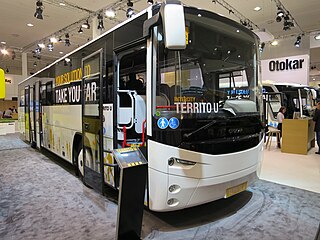
The automotive industry in Turkey plays an important role in the manufacturing sector of the Turkish economy. The companies operating in the Turkish automotive sector are mainly located in the Marmara Region, especially Bursa.
Malaysian motor vehicle import duties is an article describing the excise duty on imported vehicles into the country.
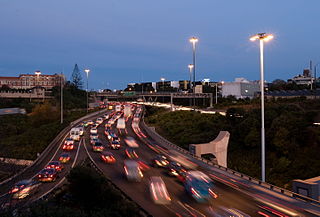
The automotive industry in New Zealand supplies a market which has always had one of the world's highest car ownership ratios. The distributors of new cars are essentially the former owners of the assembly businesses. At the dealership level they have maintained their old retail chains in spite of the establishment of the many new independent businesses built since the 1980s by specialists in used imports from Japan. Toyota entered into direct competition with those used-import businesses refurbishing old Toyotas from Japan and selling them through their own dealers as a special line. The nation's car fleet is accordingly somewhat older than in most developed countries.
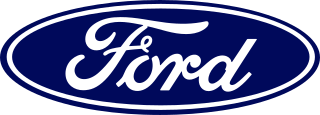
Ford Otosan Romania SRL, commonly referred to as Ford Romania, is an automobile manufacturing company operated by Ford Otosan, located in Craiova, Romania. The company was established in 2008 after Ford's purchase of Daewoo Automobile Romania. In 2022, the Ford Romania company was purchased by Ford Otosan and changed its name to Ford Otosan Romania SRL.















